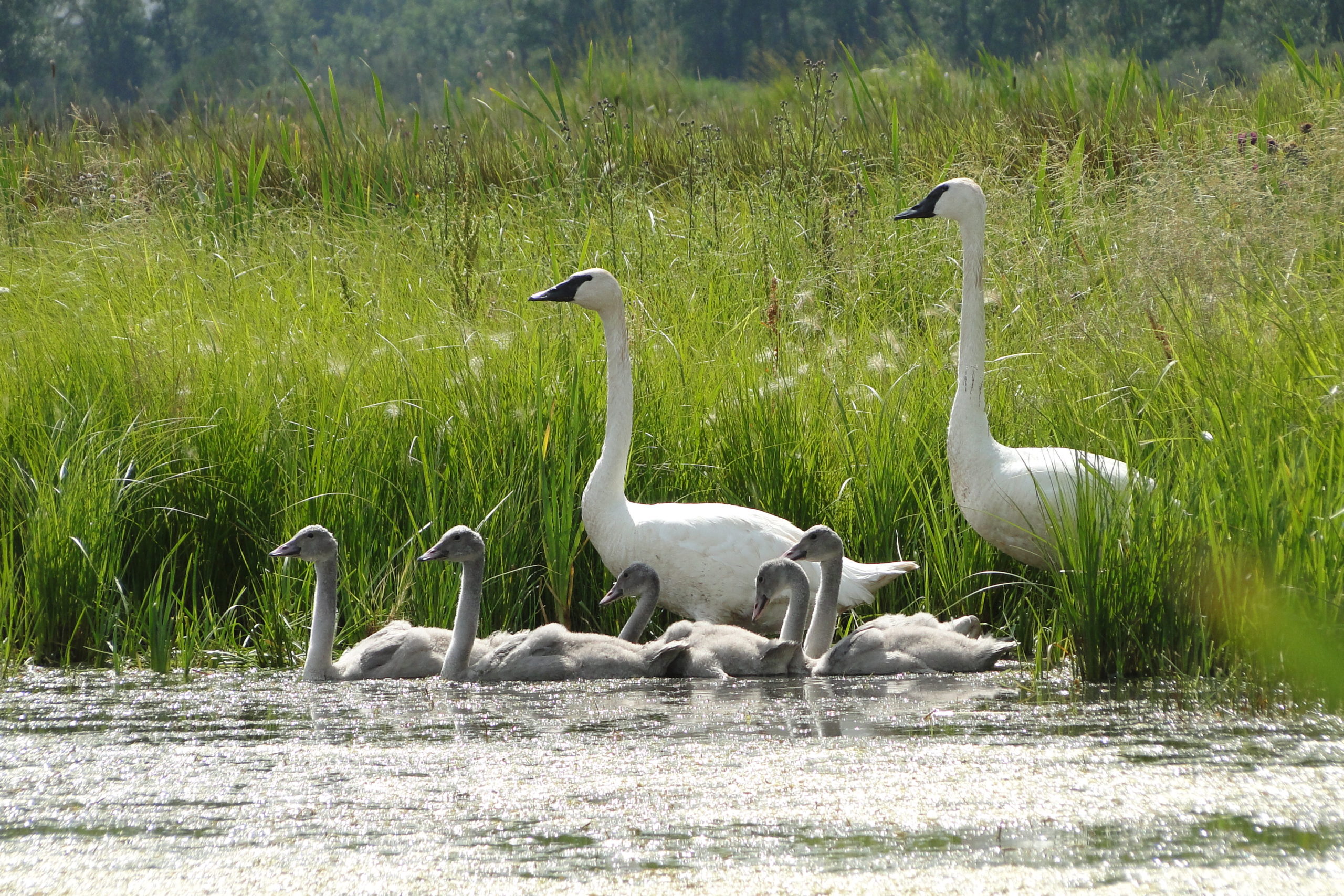
Blackfoot Valley swan family in early August
This has been a good summer for Blackfoot Valley Trumpeter Swans. Seven cygnets from two nests seem to be thriving, 15 young swans released here in the summer all appear to be doing well, and there are about 20 swans that have returned to the area from previous years.
Cygnets hatched in June are now big light gray birds with well-developed feathers. Although we haven’t seen any actual attempts at flight yet, they will be flapping their growing wings to strengthen them, in preparation for their first trial flights this month. In just 3-4 short months, they will have grown from fluffy chicks about four inches long to powerful birds of almost adult size, capable of following their parents south many miles to wintering grounds in southwest Montana or Idaho.
This first year with their parents is crucial to the long-term health and survival of the cygnets. Like many young animals, the cygnets will learn from their parents not only how and where to find food, but how to avoid danger, when to leave the relative safety of their natal wetland for wintering grounds, what migration routes to follow, where to spend the winter, and how to interact with other swans.
When five cygnets from last year’s Blackfoot nests returned to the valley this past spring, a vital link was re-established that makes the ongoing success of Trumpeter Swans in the area much more likely. Not only were swan numbers increased, but the traditional knowledge of what is needed to complete the cycle of nesting, migration, and return was passed on to a new generation of swans for the first time in many decades. An important milestone indeed!
Because numbers are still relatively small and that link still fragile, young captive-reared swans continue to be released as well. This past May and June, 15 trumpeters were released on wetlands on private ranches in the Blackfoot. Those young birds have all survived their first summer in the wild. Some of them joined up with swans returning from last year, which likely helps them learn much faster and do better than they would entirely on their own (another way of gaining traditional knowledge from older birds, even if they aren’t their parents). They have begun to make short practice flights around their wetlands, strengthening their flight muscles and learning to take off, turn, and land, and hopefully avoiding obstacles like fences and power lines. While very exciting, it’s also nerve-wracking for their human “guardians” to watch!
At some point in the next couple of months, the Blackfoot trumpeters will “get the urge for going”, perhaps as wild swans from Canada begin to migrate through, and with exultant trumpets ringing in the air our great white birds will begin their journeys south.
